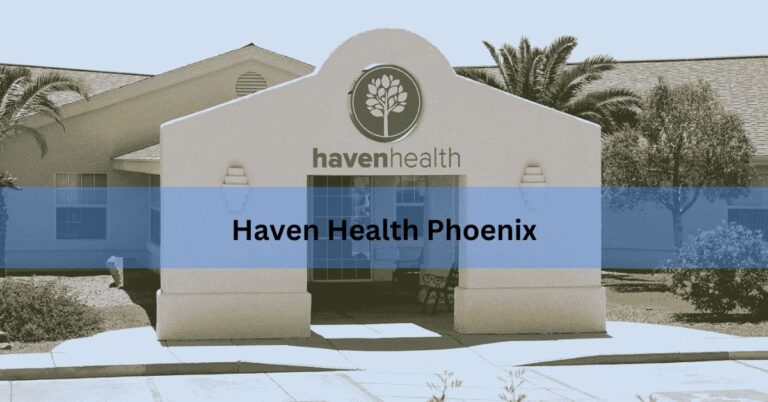Does Health Insurance Cover Ambulance – A Deep Dive into Emergency Transport Costs!
Ambulance services are critical in moments of medical crisis. When someone is seriously injured or in distress, calling 911 and being rushed to the hospital via ambulance is often a life-saving decision. But while most people assume that health insurance will automatically cover the cost of emergency medical transport, the reality in the United States is far more complicated—and often financially painful.
No, health insurance may only cover ambulance rides that are deemed medically necessary. Even then, coverage can vary based on whether the ambulance provider is in-network.
This article explains how health insurance covers ambulance rides, what factors affect coverage, and how to avoid surprise bills. Understanding your policy can help protect you from unexpected ambulance costs in the U.S.
Understanding Ambulance Services:
Ambulance transportation in the U.S. can be either emergency or non-emergency. Emergency services involve 911 calls and urgent transport, while non-emergency transports are scheduled for situations like routine hospital transfers or appointments for patients who can’t travel independently.
Ambulance services can be provided by various entities: public (municipal), private companies, hospitals, or third-party contractors. The provider’s billing policies and network status heavily influence how much you’ll be charged—even if you’re fully insured.
Does Health Insurance Cover Ambulance Rides?

Most health insurance plans do cover ambulance transportation, but the coverage is rarely straightforward. Insurance companies typically pay only if the ambulance ride is deemed medically necessary. That term—”medically necessary”—is evaluated by the insurer after the fact, and their decision affects whether you’ll get full or partial reimbursement.
If the insurer determines that alternative transportation could have been used or if the situation wasn’t urgent enough, your claim might be denied. Even when approved, only a portion of the total cost may be covered—especially if the ambulance provider is out-of-network.
In-Network vs. Out-of-Network Ambulance Providers:
One of the most confusing aspects for consumers is the network status of ambulance providers. Even if you go to an in-network hospital, the ambulance that takes you there might not be part of your insurer’s network. Many emergency transport services, particularly private ambulance companies, do not contract with insurance companies at all. This results in “surprise billing,” where patients receive large out-of-network bills despite having comprehensive insurance.
In-network providers have pre-negotiated rates with your insurer, leading to lower out-of-pocket costs. Out-of-network ambulance services can charge any rate they choose, and your insurance might only pay a small fraction of it—or nothing at all.
What Does Medicare Cover for Ambulance Services?
Medicare Part B covers 80% of approved ambulance service costs after the deductible is met, provided the transportation is medically necessary and to the nearest appropriate medical facility. The remaining 20% is typically the patient’s responsibility unless they have a supplemental plan (Medigap) that helps cover the gap.
However, like private insurers, Medicare may deny a claim if it determines the transport wasn’t justified. For example, if a patient calls for an ambulance but could have taken a taxi or driven themselves, Medicare may refuse to pay.
Also Read: Who Pays Health Insurance While On Long-Term Disability – Explore All Options!
Medicaid and Ambulance Coverage:
Medicaid coverage varies by state but generally covers emergency ambulance services fully. Some states also cover non-emergency medical transport (NEMT) for Medicaid recipients, including ambulance rides for doctor visits or scheduled treatments, but these usually require pre-authorization.
It’s essential for Medicaid users to check with their state’s program to understand what ambulance services are included and whether prior approval is needed.
Employer Insurance and Ambulance Billing Practices:
Employer-provided insurance plans may have better negotiated agreements, but they still face the same obstacles as individual plans. An ambulance ride might be partially covered, but if the provider is out-of-network or the service isn’t considered essential, the employee could receive a large bill. It’s common for insured patients to receive surprise ambulance bills even from fully insured employer-based plans.
Some employers now offer supplemental accident insurance, which includes coverage for emergency transportation. However, this is usually an add-on and not part of standard health insurance.
How Much Does an Ambulance Ride Cost Without Insurance?
For the uninsured, ambulance rides can be prohibitively expensive. In the U.S., an ambulance trip can range from $500 to over $5,000, depending on distance, level of care provided, and equipment used during transport.
If advanced life support (ALS) or air ambulance (helicopter/airplane) is required, the cost can easily exceed $20,000 or more, particularly in rural or hard-to-reach areas.
Ground vs. Air Ambulance Services: Are They Covered Differently?

Air ambulance services are even more complex. These are typically reserved for life-threatening situations, such as transporting patients from accident scenes or remote areas. Coverage for air ambulances is more limited than ground transport, with many insurers covering only part of the bill—if at all.
Air ambulances are often operated by for-profit companies that may not participate in insurance networks. Patients receiving life-saving air transport frequently face bills ranging from $30,000 to $50,000 or more, with insurance only covering a portion or denying the claim altogether.
The No Surprises Act and Ambulance Coverage:
As of 2022, the No Surprises Act helps protect consumers from unexpected out-of-network charges in emergencies. However, the Act currently does not cover ground ambulance services. This is a major gap in consumer protection. While air ambulances have some coverage under the law, the majority of surprise medical bills from ambulances remain unaffected.
Efforts are underway to extend protections to ambulance billing, but until that happens, patients remain vulnerable to substantial costs.
Steps You Can Take to Avoid Surprise Ambulance Bills
While you can’t predict emergencies, you can take steps to reduce your risk of surprise billing:
First, understand your insurance plan’s policies on ambulance services. Review in-network providers and learn what constitutes medical necessity.
Second, if you or a family member has a chronic condition, pre-register with ambulance services or ask about transportation options covered by your plan.
Third, consider supplemental health insurance or accident policies that include ambulance benefits.
Finally, in non-emergency situations, explore alternatives to ambulance transport, such as urgent care or telehealth consultations. Using 911 should always be reserved for true emergencies.
FAQ’s:
1. What is a medically necessary ambulance ride?
This refers to an emergency situation where the patient cannot be safely transported by any other means due to the severity of their condition.
2. What happens if the ambulance is out-of-network?
You may be billed for the difference between what your insurer pays and what the ambulance company charges. This is called balance billing or a “surprise bill.”
3. Does Medicare cover ambulance services?
Yes, Medicare Part B typically covers 80% of medically necessary ambulance costs after the deductible is met. The rest is the patient’s responsibility unless they have supplemental insurance.
4. Can I refuse an ambulance to avoid high costs?
Yes, you can refuse an ambulance if you are conscious and not in immediate danger, but doing so against medical advice can be risky and may affect insurance claims.
5. Does Medicaid cover ambulance rides?
Generally, yes—emergency ambulance services are covered under Medicaid, but non-emergency transport may require prior approval depending on the state.
6. Will insurance pay for a non-emergency ambulance ride?
Usually not, unless it’s pre-authorized and deemed medically necessary, such as transporting a patient to dialysis or chemotherapy.
7. What if I receive a large ambulance bill?
You can appeal the bill with your insurance, negotiate with the provider, or contact state regulators. Some hospitals and ambulance companies offer financial assistance.
Closing Thoughts:
Ambulance services are essential in critical situations, but they can also come with high—and unexpected—costs. While health insurance may cover ambulance rides under certain conditions, gaps in network coverage and medical necessity reviews can leave insured patients responsible for hundreds or thousands of dollars.
Read More:






